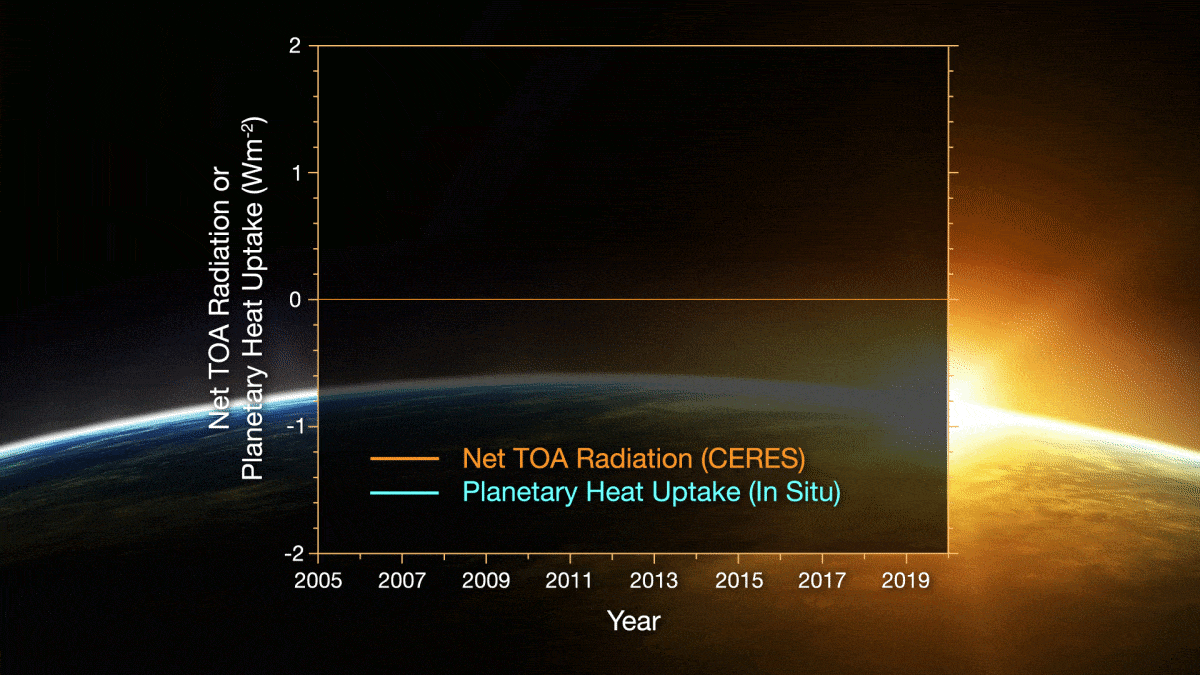
Earth’s Energy Imbalance Doubled in the Last 14 Years, NASA and NOAA Confirm

As the U.S. West continues to bake amidst dangerously high temperatures, a new study from NASA and NOAA confirms that Earth is indeed heating up as the climate crisis persists.
The research, published in Geophysical Research Letters Tuesday, involves Earth’s Energy Imbalance, or the difference between the heat our planet absorbs from the sun, and the thermal infrared radiation it sends back into space. If the Earth absorbs more heat than it emits, that means it has a positive energy balance. The study found that not only is the current energy balance positive, it has essentially doubled in the last 14 years, as NASA explained.
“The magnitude of the increase is unprecedented,” lead author and principal investigator for CERES at NASA’s Langley Research Center Norman Loeb told NASA.
The researchers based their findings on two data sets using measurements taken between 2005 and 2019:
- Skies: NASA’s Clouds and the Earth’s Radiant Energy System (CERES) satellites measure how much energy enters and leaves the planet.
- Seas: The Argo network of ocean floats measure how much the sea is heating up. Since 90 percent of the extra heat entering Earth is absorbed by the ocean, this is a useful data set.
“The two very independent ways of looking at changes in Earth’s energy imbalance are in really, really good agreement, and they’re both showing this very large trend, which gives us a lot of confidence that what we’re seeing is a real phenomenon and not just an instrumental artifact, ” Loeb explained to NASA. “The trends we found were quite alarming in a sense.”
Earth’s energy balance isn’t actually off by that much, according to an E&E News article published by Scientific American. In fact, the difference between energy in and energy out stands at around 0.3 percent. But it’s enough that Earth has heated by almost two degrees Fahrenheit in the last 150 years.
The researchers also looked at the cause of the rising imbalance. Much of it, indeed, is down to greenhouse gas emissions. But some of it is caused by feedback loops set in motion by the excess heat. For one thing, warmer temperatures mean less sea ice, and less sea ice means that more heat is absorbed by the darker ocean water. Furthermore, changes in cloud cover have also led to more heat staying on Earth.
Finally, there are some natural variations that contribute to the rising imbalance. Notably the Pacific Decadal Oscillation (PDO) switched from a cool to a warm phase from 2014 to 2020, NASA explained.
Now, Loeb says that scientists can use this data to confirm their models predicting how the climate will alter if Earth’s energy imbalance continues to hike.
“My hope is this study will inspire people in the modeling community to… test the models in innovative ways that will enable us to say something more about what’s gonna happen in the future,” Loeb told E&E News. “There’s more work to be done on the modeling side to unscramble this a little further.”

 233k
233k  41k
41k  Subscribe
Subscribe 